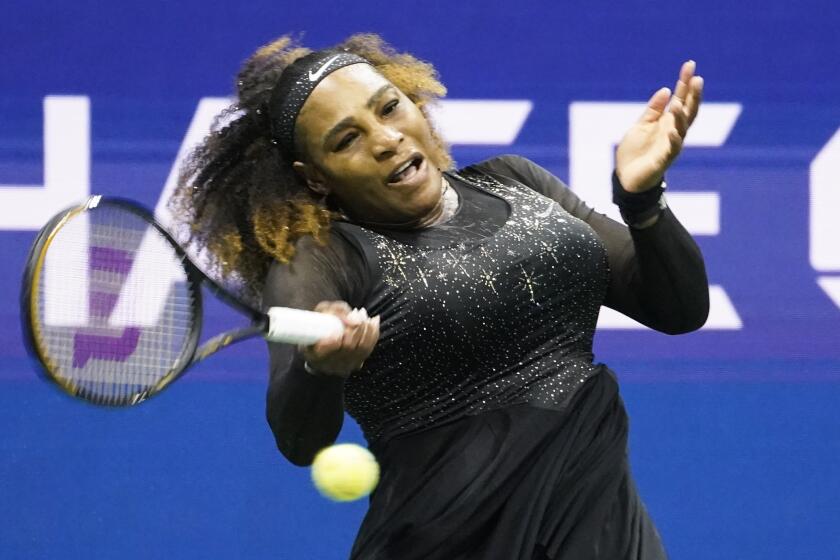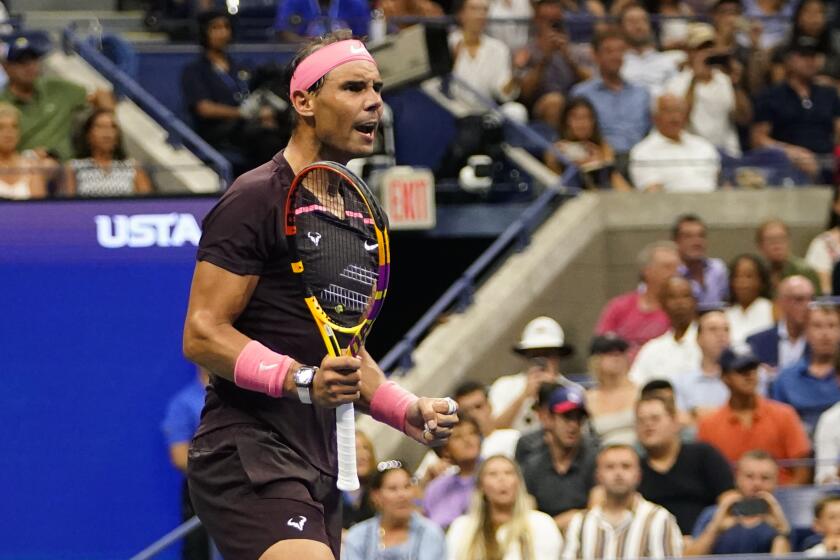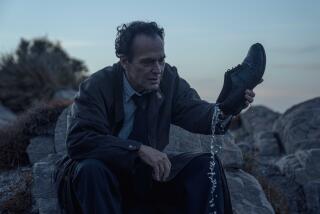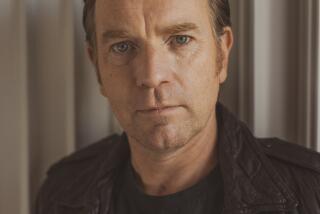Column: ‘It’s been a hell of a ride’: John McEnroe reflects on his life as tennis’ bad boy
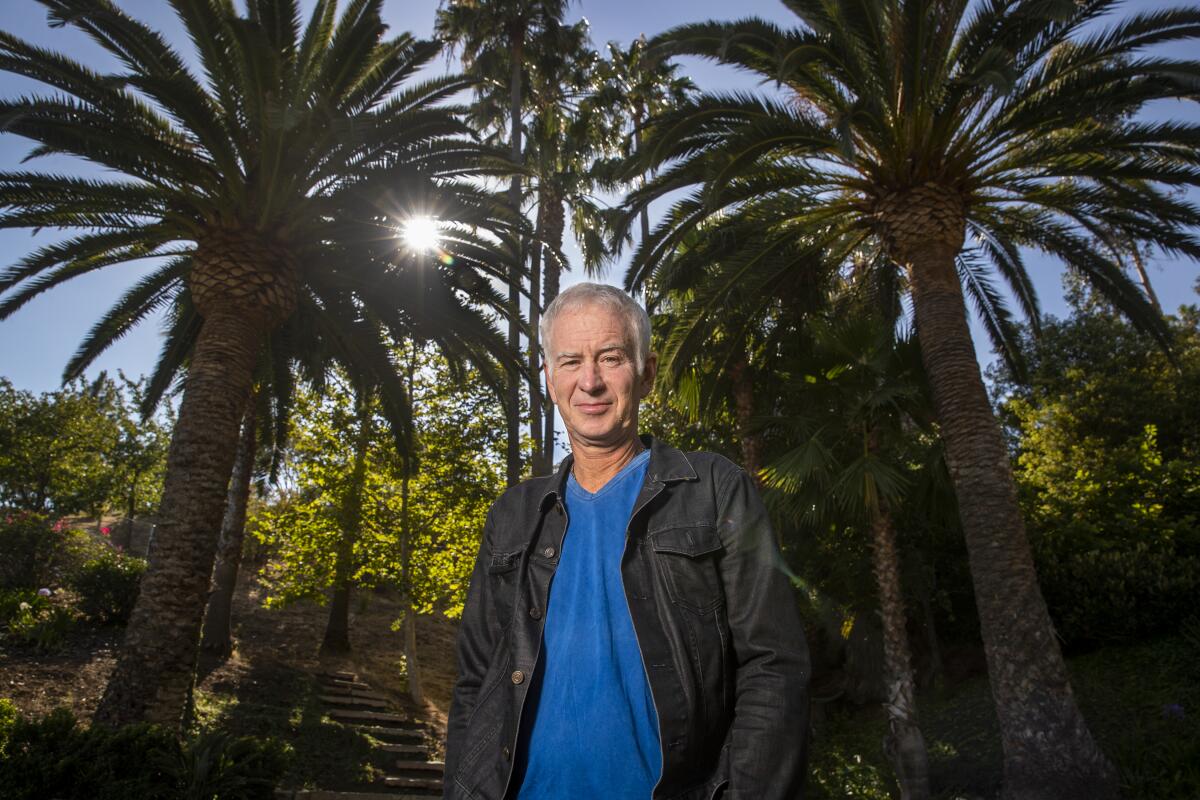
The streets of New York City are deserted as John McEnroe walks past familiar landmarks and dark alleys on a trip that covers a few miles and many decades.
With each step he takes in the late-night scenes that link the insightful documentary “McEnroe,” the man whose foul-mouthed tirades were as famous as his exceptional tennis skills finds the peace in life’s imperfections. His journey continues, though at age 63 he’s well-established as a TV commentator and nearly three decades into a relationship and second marriage to singer/songwriter Patty Smyth.
“Each year that I’ve gone by in my life I feel like I’m getting closer to the promised land,” he said in a recent conversation. “I’m not sure anyone ever gets totally there. I doubt I’ll ever get totally there.”
Playing in what could be the final Grand Slam of her prolific career, Serena Williams won her first-round match at the U.S. Open on Monday night.
He hasn’t forgotten his grudges against the chair umpires and linespeople who heard his wrath while they called the matches that catapulted him to No. 1 in the world for 170 weeks and 155 men’s tour titles, still a record. His children, too young to have seen him in his blustery glory, caught those tirades on YouTube long before the sequences appeared in the documentary, which begins streaming on Showtime on Friday.
He cringes when he watches those outbursts, but he hasn’t disowned them. His famous declaration to an official during Wimbledon in 1981, “You cannot be serious,” became the title of his 2002 autobiography. Not a day goes by that he doesn’t hear someone say it to him. It’s his trademark. It’s also a reminder of how badly he sometimes reacted to living in a strange adult world and the pressures that left him feeling doomed even while he dominated the men’s tour.
“I think I was right most of the time. That doesn’t mean I went about it in the right way,” he said of his behavior toward officials.
“Knock on wood, I feel like I’m in a pretty good place now. The effort that I’ve made to get there, that’s been like a roller coaster in a lot of ways, but it’s been a hell of a ride. So I look at it that way and I feel like I’m in a pretty good place in my life right now.”
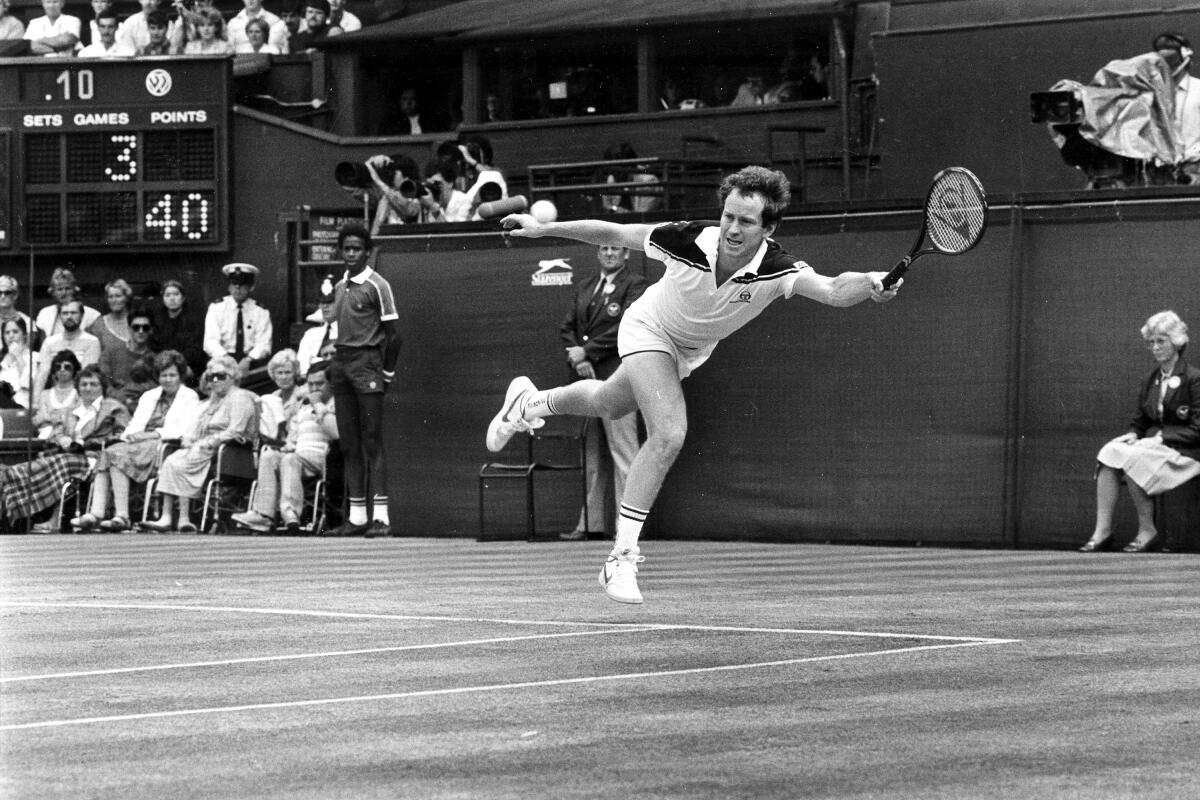
The current bad boy of tennis, Australia’s Nick Kyrgios, differs from McEnroe in one key area: McEnroe always played all-out.
“Each time he does something I go, ‘Did I do that?’” McEnroe said. “I like Nick as a person. I think he’s a smart kid. He moves the needle. I think the players like him. A lot of fans like him. There’s a lot of talk about him. He’s an incredible talent.
“Almost all athletes have that fear of failure, and the question is not whether or not you have that. It’s how you handle it. Can you go out there and consistently give the effort that’s expected of a professional athlete who’s getting rewarded handsomely for their services? That’s the only issue that I’ve had with Nick over the years. I tried to model myself after [Jimmy] Connors, giving that type of effort. How hard did I try? Did I give it my best? And I think for the most part I feel like I did that, and I feel too often Nick just mails it in. And that’s just not good for him or good for the sport.”
Rafael Nadal has been dealing with injuries that could threaten his career, but he earned a first-round victory over Rinky Hijikata at the U.S. Open.
Pushed by his father, John, who was his manager and billed him by the hour for those services, McEnroe grew up in a family of perfectionists. By his count he has seen 37 psychologists and psychiatrists “through court orders and my own free will” in a quest to understand himself and his behavior.
He jammed with the Rolling Stones, partied at Studio 54 with rival Vitas Gerulaitis and dabbled in recreational drugs and harder stuff, which contributed to the bitter and public end of his marriage in 1994 to actress Tatum O’Neal, the mother of his three oldest children. He knew he was sabotaging his career. But he couldn’t stop.
“These days, athletes are doing performance-enhancing drugs. We were doing performance-detracting drugs,” he says in the documentary. “That’s, to me, the difference. Criticize me if you like for doing that. Maybe it’s good so you could appreciate your life a little more for a period of time.”
“I feel like I’m in a pretty good place now. The effort that I’ve made to get there, that’s been like a roller coaster in a lot of ways, but it’s been a hell of a ride.”
— John McEnroe
The documentary, which was delayed for COVID-related reasons, has some match footage but is most effective in giving voice to observations from McEnroe’s brothers, Patrick and Mark, his former doubles partner Peter Fleming, tennis great Billie Jean King, and Björn Borg, who was McEnroe’s nemesis before he became a friend. There’s also an appearance from Rolling Stones co-founder and guitarist Keith Richards because why not?
McEnroe seems truly thoughtful while walking the streets near his home in the Douglaston neighborhood of Queens. He’s the typical don’t-make-eye-contact New Yorker when someone recognizes him in Chinatown. The New York scenes work. But director Barney Douglas’ computer-generated elements are gimmicky and advancing the plot by having McEnroe answer a ringing phone in a phone booth — apparently the only two phone booths left in New York — feels artificial.
McEnroe’s honesty carries the film. Four of his five kids appear on camera, plus Smyth’s daughter from her first marriage. He wanted to be more affectionate with his kids than his father was to him. That could be his most significant feat. “I married a bad boy who turned out to be a really good man,” Smyth says.
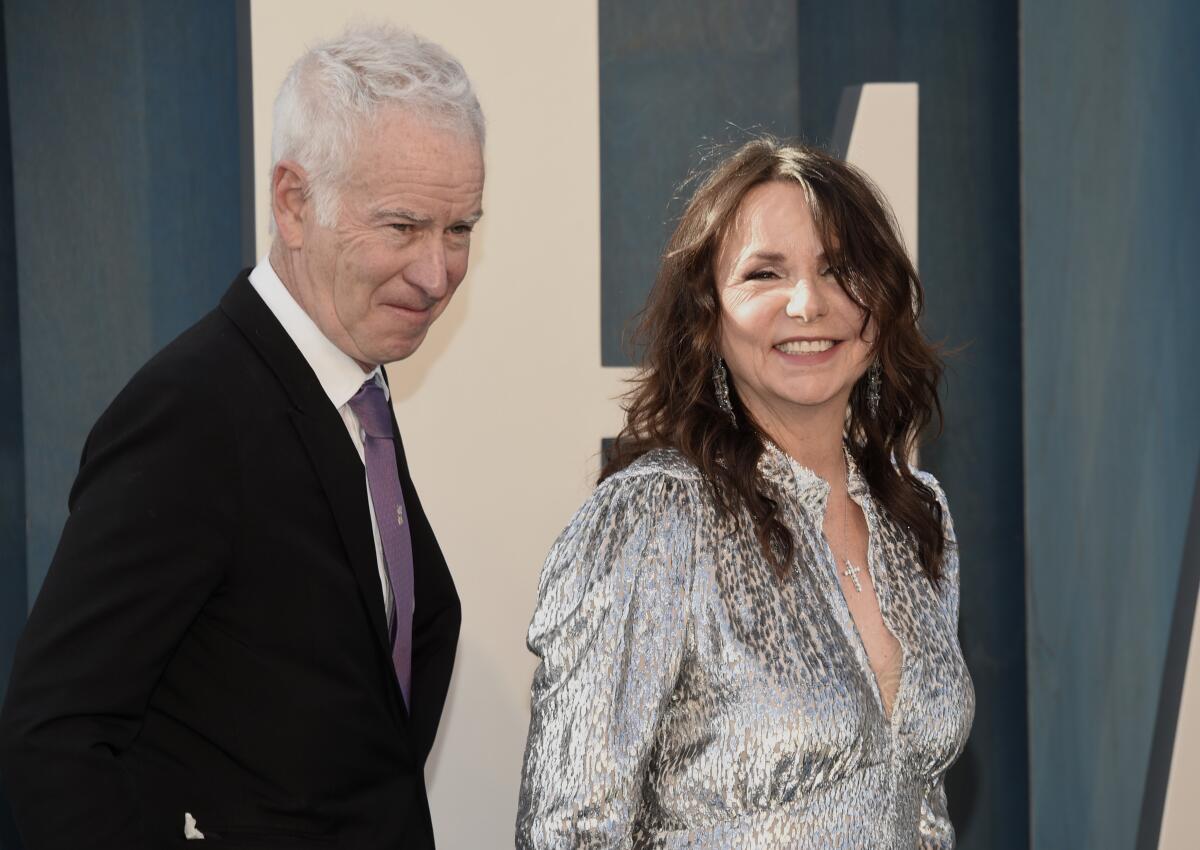
That was McEnroe’s favorite moment. “I get goosebumps. It’s just a wonderful thing,” said McEnroe, who has homes in New York and Malibu. “Twenty-eight years later it’s nice to feel that I was able to get that second chance. Thankfully I was mature enough and smart enough to realize that here was an opportunity in front of me that if you blow this, you’re a moron.”
The film ends with him embracing Smyth as the sun rises over New York. Complete peace might elude him, but his journey has been compelling, and this documentary tells it well.
More to Read
Go beyond the scoreboard
Get the latest on L.A.'s teams in the daily Sports Report newsletter.
You may occasionally receive promotional content from the Los Angeles Times.

